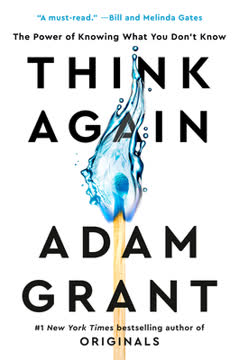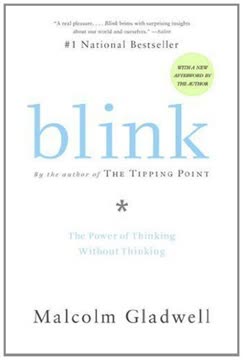Key Takeaways
1. Genius is not always synonymous with precocity
The examples that Galenson could not get out of his head, however, were Picasso and Cézanne.
Conceptual vs. experimental innovators. Galenson's research revealed two distinct types of creative geniuses: conceptual innovators who peak early (like Picasso) and experimental innovators who develop their craft over time (like Cézanne). Conceptual innovators often have a clear vision from the start and execute it quickly, while experimental innovators work through trial and error, improving gradually over many years.
Late bloomers in various fields. This pattern extends beyond visual arts to literature, music, and science. Examples include:
- Mark Twain publishing "Adventures of Huckleberry Finn" at 49
- Alfred Hitchcock's most acclaimed films produced in his 50s and 60s
- Daniel Defoe writing "Robinson Crusoe" at 58
The research challenges the common belief that creative genius is always tied to youthful brilliance, suggesting that late bloomers can achieve equal or greater success through persistent experimentation and refinement of their craft.
2. Late bloomers often follow experimental paths to success
"To seek in painting" — Cézanne
Persistence and experimentation. Late bloomers like Cézanne often approach their work as a process of continuous experimentation and learning. They may not have a clear end goal in mind, but instead focus on gradual improvement and discovery. This approach can lead to groundbreaking innovations that aren't immediately apparent.
Support systems are crucial. Late bloomers often rely on strong support systems to sustain their long periods of development. For example:
- Cézanne's friend Emile Zola provided emotional and financial support
- Ben Fountain's wife supported his writing career for over a decade before his breakthrough
- Patrons, mentors, and family members often play critical roles in nurturing late-blooming talent
The success of late bloomers highlights the importance of patience, perseverance, and supportive environments in fostering creative achievement, challenging the notion that genius must manifest early to be valid.
3. The talent myth can lead to organizational failures
The management of Enron, in other words, did exactly what the consultants at McKinsey said that companies ought to do in order to succeed in the modern economy.
Overemphasis on individual talent. The talent myth, popularized by management consultants, suggests that organizational success depends primarily on hiring and rewarding top performers. This approach can lead to:
- Excessive focus on recruiting "stars" from top schools
- Disproportionate rewards for perceived high performers
- Neglect of teamwork, systems, and organizational culture
Enron as a cautionary tale. Enron's collapse exemplifies the dangers of the talent myth:
- Aggressive hiring of top graduates and MBAs
- Rapid promotion of perceived stars
- Cutthroat internal competition
- Neglect of sustainable business practices and ethical considerations
The Enron case demonstrates that overreliance on individual talent without strong organizational systems and ethics can lead to spectacular failures. Successful companies often prioritize teamwork, consistent processes, and long-term sustainability over short-term individual performance.
4. Interviews and first impressions are often misleading
A person watching a two-second silent video clip of a teacher he has never met will reach conclusions about how good that teacher is that are very similar to those of a student who sits in the teacher's class for an entire semester.
Snap judgments influence perceptions. Research shows that people form lasting impressions within seconds of meeting someone. These quick judgments can significantly impact hiring decisions, often leading to biased outcomes. Studies reveal:
- Ratings based on brief video clips closely match those from extended interactions
- Handshake and initial greeting strongly predict interview outcomes
- First impressions tend to override subsequent information
Limitations of traditional interviews. Standard job interviews are poor predictors of actual job performance because:
- They favor candidates who make good first impressions
- Interviewers often make decisions based on irrelevant factors (e.g., likability, similarity to themselves)
- Brief encounters can't accurately assess complex skills and behaviors
These findings suggest that organizations should rely less on unstructured interviews and more on objective assessments, work samples, and structured interview techniques to make better hiring decisions.
5. Criminal profiling is often more art than science
"It was very much a gut call," he says.
Limitations of profiling. Despite its popularity in media and law enforcement, criminal profiling often lacks scientific validity. Key issues include:
- Reliance on subjective interpretations and intuition
- Lack of empirical evidence supporting profiling accuracy
- Tendency to confirm pre-existing biases
The Barnum effect in profiling. Many criminal profiles use vague, general statements that could apply to many individuals, similar to horoscopes. This "Barnum effect" can lead investigators to see connections that may not exist, potentially misdirecting investigations.
Profiling techniques often employ:
- Broad personality categories (e.g., "organized" vs. "disorganized" offenders)
- Generalized behavioral predictions
- Post-hoc rationalizations of criminal behavior
While profiling can sometimes provide useful insights, its limitations and potential for bias suggest that it should be used cautiously and in conjunction with more empirical investigative methods.
6. Intelligence testing fails to predict job performance
On a scale where 0.1 or below means virtually no correlation and 0.7 or above implies a strong correlation (your height, for example, has a 0.7 correlation with your parents' height), the correlation between IQ and occupational success is between 0.2 and 0.3.
IQ's limited predictive power. Despite the emphasis often placed on intelligence in hiring and education, IQ scores have a surprisingly weak correlation with job performance. This challenges common assumptions about the importance of academic intelligence in professional success.
Other factors influencing success. Research suggests that other attributes may be more predictive of job performance:
- Emotional intelligence
- Practical intelligence or "tacit knowledge"
- Conscientiousness and other personality traits
- Specific job-related skills and knowledge
The weak link between IQ and job success implies that organizations should look beyond traditional measures of intelligence when evaluating candidates. Instead, they should focus on a broader range of skills and attributes that are more directly related to job performance.
7. Effective teaching stems from non-verbal cues
A person watching a two-second silent video clip of a teacher he has never met will reach conclusions about how good that teacher is that are very similar to those of a student who sits in the teacher's class for an entire semester.
Non-verbal communication in teaching. Research by Nalini Ambady showed that brief, silent video clips of teachers could predict their effectiveness ratings as accurately as full-semester student evaluations. This suggests that effective teaching relies heavily on non-verbal cues such as:
- Body language and gestures
- Facial expressions
- Posture and movement
- Energy and enthusiasm
Implications for education. These findings have significant implications for teacher training and evaluation:
- Greater emphasis on developing non-verbal communication skills
- Reconsidering traditional methods of teacher assessment
- Exploring the role of charisma and presence in effective teaching
The power of non-verbal cues in teaching effectiveness highlights the importance of factors beyond content knowledge and pedagogical techniques in creating engaging and impactful learning experiences.
8. Structured interviews yield better hiring outcomes
In the structured interviews, the format is fairly rigid. Each applicant is treated in precisely the same manner. The questions are scripted. The interviewers are carefully trained, and each applicant is rated on a series of predetermined scales.
Benefits of structured interviews. Research shows that structured interviews are more effective at predicting job performance than traditional, unstructured conversations. Key elements include:
- Consistent questions for all candidates
- Predetermined rating scales for responses
- Trained interviewers following a specific protocol
Overcoming biases. Structured interviews help reduce common hiring biases by:
- Focusing on job-relevant information
- Limiting the impact of first impressions and personal chemistry
- Providing a standardized basis for comparison between candidates
Despite their effectiveness, many organizations resist adopting structured interviews because they feel less natural and intuitive than conversational approaches. However, the improved predictive power and fairness of structured interviews make them a valuable tool for making better hiring decisions.
9. Context heavily influences human behavior
This conclusion, obviously, is at odds with our intuition. Most of the time, we assume that people display the same character traits in different situations.
Situational variability. Psychological research challenges the notion of consistent personality traits across different contexts. Studies show that:
- Behavior in one setting poorly predicts behavior in another
- People often behave differently depending on the specific situation
- Observers tend to overestimate consistency in others' behavior
The Fundamental Attribution Error. This cognitive bias leads people to:
- Attribute others' behavior primarily to their personality
- Underestimate the influence of situational factors
- Assume greater consistency in others' behavior than actually exists
Understanding the power of context has important implications for:
- Hiring and performance evaluation
- Leadership and team management
- Social interactions and relationship building
Recognizing the variability in human behavior across different situations can lead to more nuanced and effective approaches to understanding and working with others.
10. Success often depends on systems, not just individual talent
The broader failing of McKinsey and its acolytes at Enron is their assumption that an organization's intelligence is simply a function of the intelligence of its employees. They believe in stars, because they don't believe in systems.
The importance of organizational systems. Successful companies often prioritize effective systems and processes over individual star performers. Examples include:
- Southwest Airlines' efficient turnaround processes
- Walmart's logistics and supply chain management
- Procter & Gamble's marketing methodology
Limitations of the star system. Overemphasis on individual talent can lead to:
- Neglect of teamwork and collaboration
- Excessive internal competition
- Failure to develop robust organizational processes
Balancing talent and systems. Effective organizations recognize that success comes from:
- Aligning individual skills with organizational needs
- Creating systems that enhance and leverage talent
- Fostering a culture of continuous improvement
By focusing on building strong systems and processes, organizations can create sustainable success that doesn't rely solely on the performance of a few star individuals.
</instructions>
Last updated:
FAQ
What's What the Dog Saw about?
- Collection of Essays: What the Dog Saw is a compilation of Malcolm Gladwell's essays from The New Yorker, exploring human behavior, decision-making, and everyday life complexities.
- Three Main Sections: The book is divided into sections focusing on obsessives and minor geniuses, theories and organizing experiences, and predictions about people.
- Unique Perspectives: Gladwell encourages readers to view situations from different viewpoints, exploring topics like dog training and ketchup.
Why should I read What the Dog Saw?
- Engaging Writing Style: Gladwell's narrative makes complex ideas accessible and enjoyable, drawing readers in with his storytelling.
- Thought-Provoking Insights: The book challenges conventional wisdom, encouraging critical thinking about everyday phenomena.
- Diverse Topics: With subjects ranging from dog training to consumer behavior, the book offers something for everyone.
What are the key takeaways of What the Dog Saw?
- Understanding Perspectives: Emphasizes seeing situations from different viewpoints, improving communication and relationships.
- Complex Decision-Making: Discusses how biases and societal norms influence decisions, prompting reflection on personal decision-making.
- Role of Minor Geniuses: Highlights contributions of lesser-known individuals, showing how unique insights lead to innovation.
What are the best quotes from What the Dog Saw and what do they mean?
- “To a worm in horseradish...”: Illustrates how perspectives are shaped by experiences, suggesting limited understanding based on circumstances.
- “The trick to finding ideas...”: Emphasizes curiosity and open-mindedness in discovering new ideas, encouraging exploration of everyday stories.
- “If you want to make sense...”: Highlights the necessity of understanding context and experiences in significant events.
How does Malcolm Gladwell define "minor geniuses" in What the Dog Saw?
- Everyday Innovators: Describes "minor geniuses" as individuals with significant contributions, often possessing unique insights.
- Examples in the Book: Features profiles like Ron Popeil, illustrating the impact of creativity and perseverance.
- Valuing Unconventional Talent: Encourages appreciation for talents and contributions outside traditional success molds.
What is the "other minds problem" mentioned in What the Dog Saw?
- Psychological Concept: Refers to the difficulty in understanding others' distinct thoughts and experiences.
- Child Development: Explains how children learn that others have different perspectives, a crucial cognitive milestone.
- Implications for Understanding: Highlights empathy and communication's importance in relationships, fostering deeper connections.
How does Gladwell approach the topic of ketchup in What the Dog Saw?
- Ketchup Conundrum: Explores why Heinz dominates despite competitors, examining psychological and emotional connections.
- Consumer Preferences: Discusses preference for familiar products, shedding light on brand loyalty complexities.
- Cultural Significance: Uses ketchup to examine broader themes of identity and preference in American society.
What is the significance of Cesar Millan in What the Dog Saw?
- Dog Whisperer: Featured in an essay exploring his unique dog training approach, emphasizing understanding behavior.
- Understanding Behavior: Millan's methods serve as a metaphor for understanding human behavior and emotions.
- Calm Assertiveness: His philosophy of calm assertiveness is applicable to improving relationships with both dogs and people.
What is the "quarterback problem" discussed in What the Dog Saw?
- Difficulty in Prediction: Refers to challenges in predicting college quarterbacks' success in the NFL.
- Context Matters: Emphasizes differing skills required in college versus professional football.
- Need for Experimentation: Suggests real game situations for evaluation rather than relying solely on pre-draft metrics.
How does Gladwell define "normal accidents" in What the Dog Saw?
- Complex Systems: Occur in systems where small failures lead to catastrophic outcomes, exemplified by Three Mile Island.
- Unpredictable Interactions: Focuses on how failures interact unpredictably, complicating prevention efforts.
- Cultural Implications: Warns against organizational complacency, as seen in disasters like the Challenger explosion.
What is the "talent myth" discussed in What the Dog Saw?
- Overrating Intelligence: Posits that organizations overvalue intelligence, leading to poor decision-making.
- Importance of Systems: Successful organizations create systems for all employees to thrive, not just "stars."
- Real-World Examples: Uses Enron to illustrate how focusing on talent without performance consideration leads to failure.
How does Gladwell illustrate the concept of "choking" versus "panicking" in What the Dog Saw?
- Choking vs. Panicking: Choking is underperformance due to pressure; panicking is losing control in crises.
- Understanding Performance: Choking involves overthinking; panicking results from instinctive actions.
- Implications for Success: Recognizing these behaviors helps manage responses in high-pressure situations.
Review Summary
What the Dog Saw is a collection of Malcolm Gladwell's articles from The New Yorker, covering diverse topics from ketchup marketing to criminal profiling. Readers appreciate Gladwell's ability to connect seemingly unrelated ideas and present complex information accessibly. Some find his storytelling engaging and thought-provoking, while others criticize his tendency to oversimplify or generalize. The book's format of shorter essays is generally well-received, allowing Gladwell to showcase his writing skills without the constraints of a single overarching theme.
Similar Books










Download PDF
Download EPUB
.epub digital book format is ideal for reading ebooks on phones, tablets, and e-readers.













